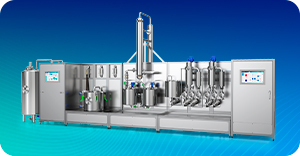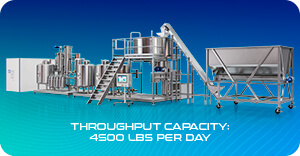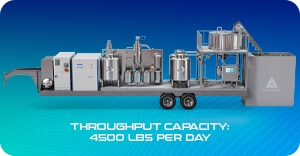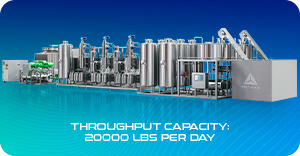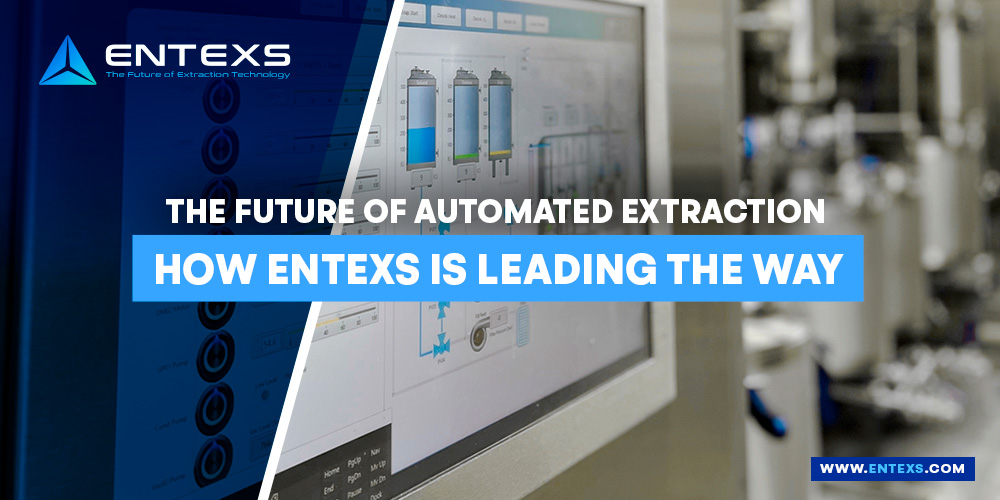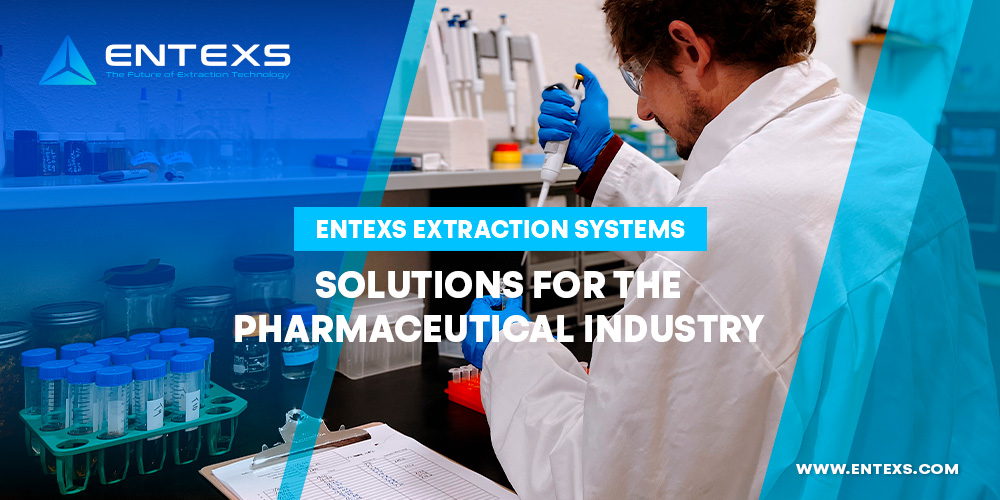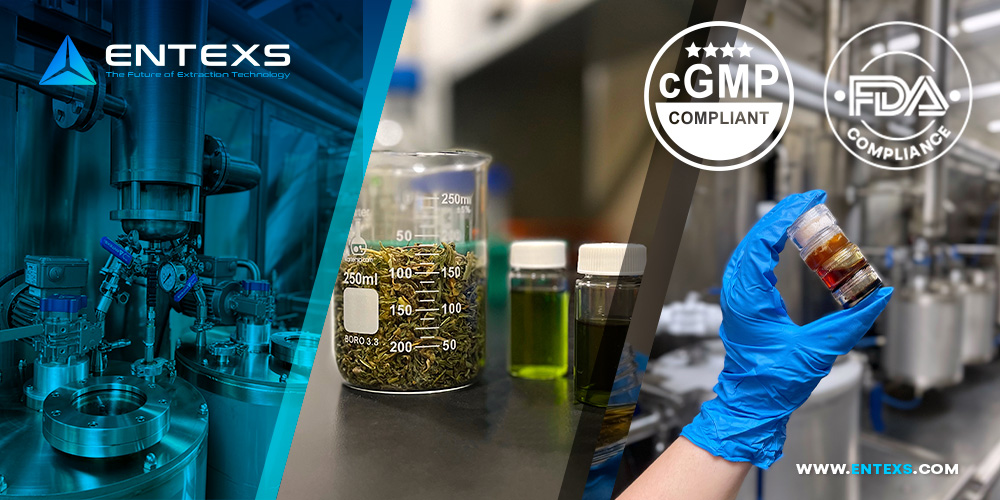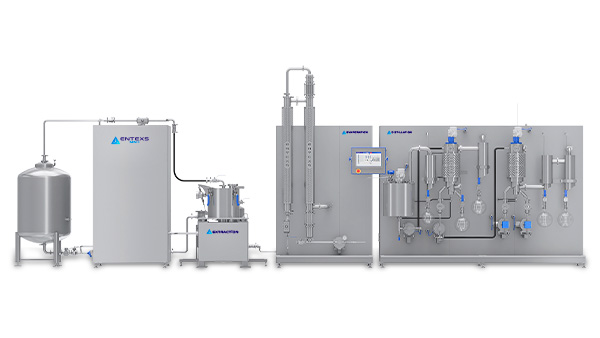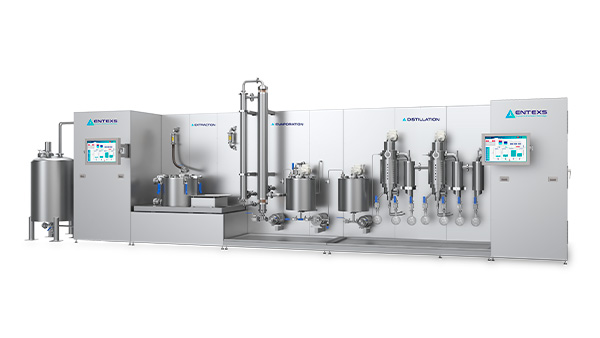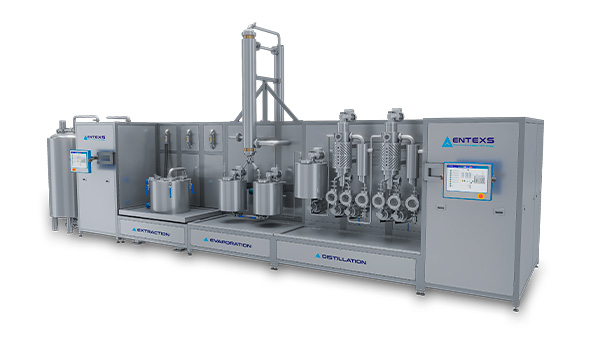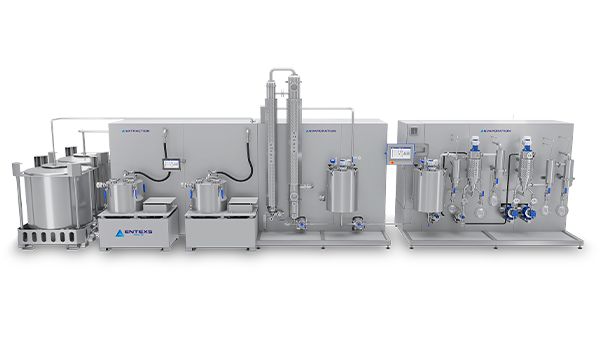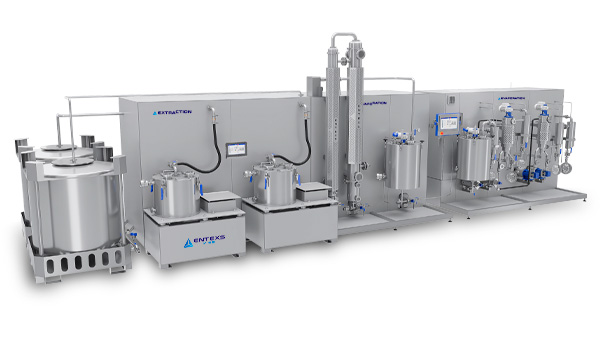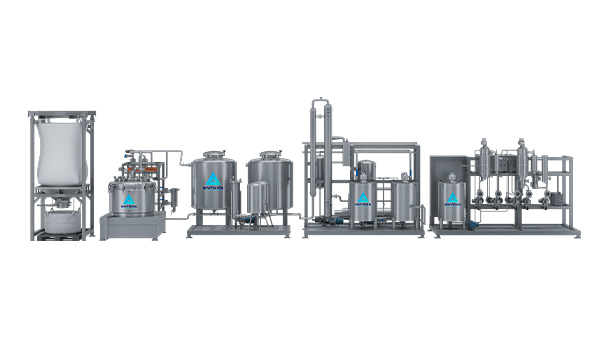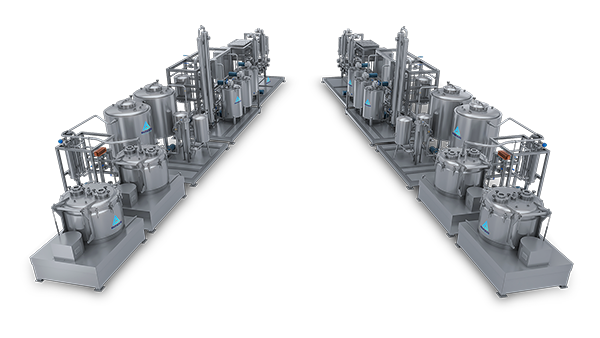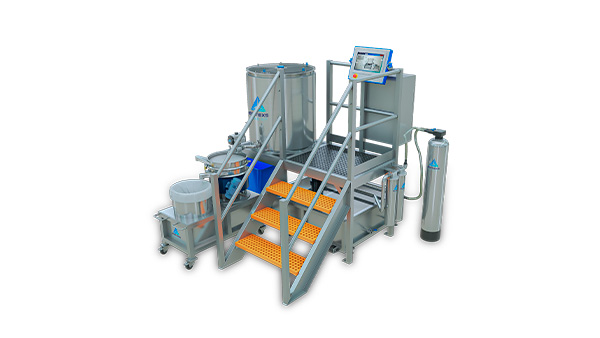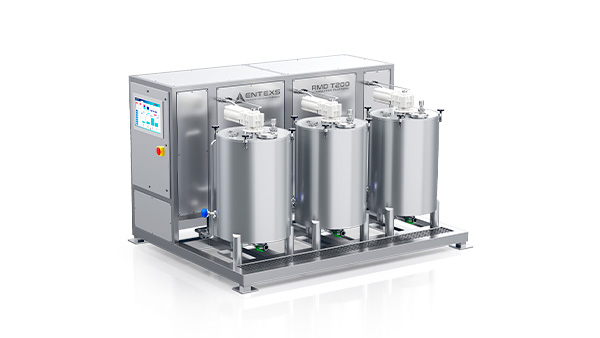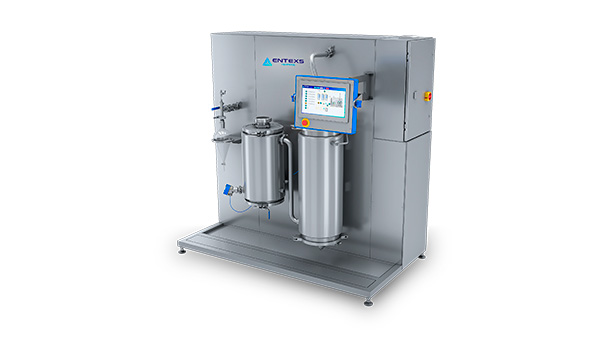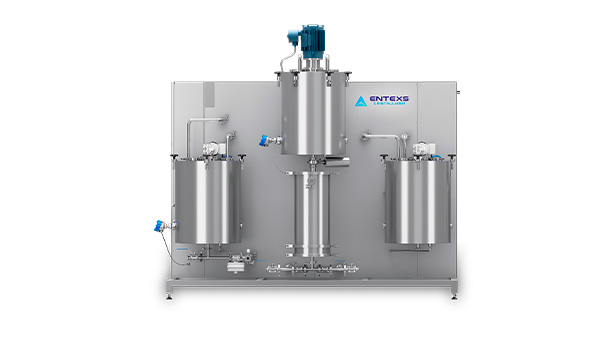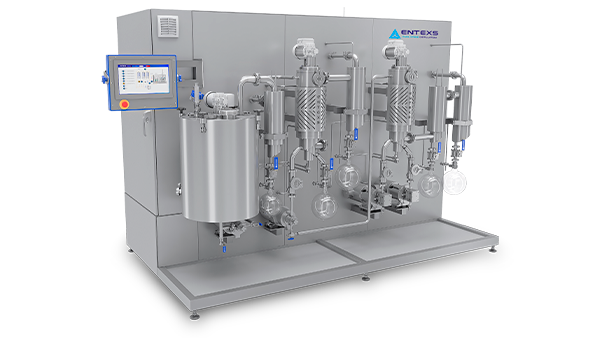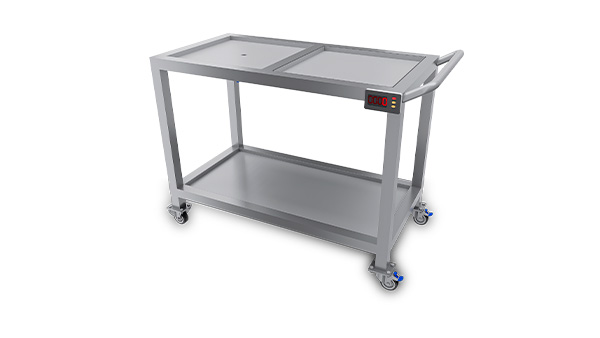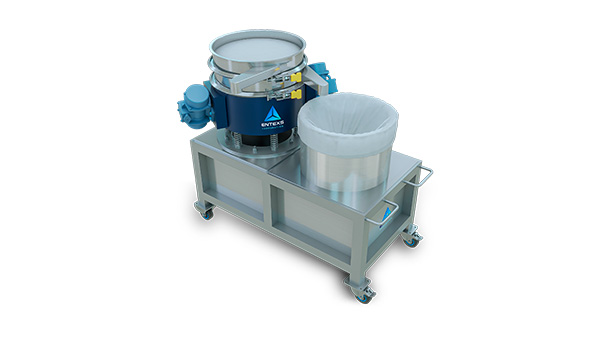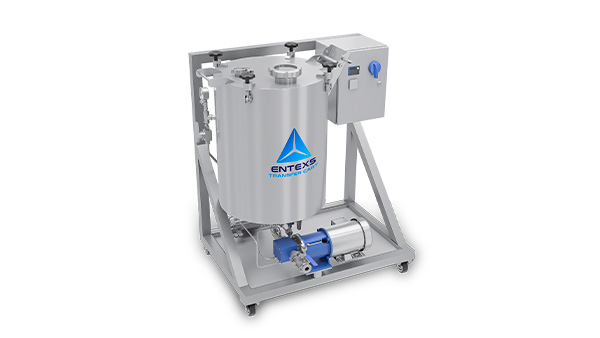Things to Consider When Purchasing a Hemp Extraction System
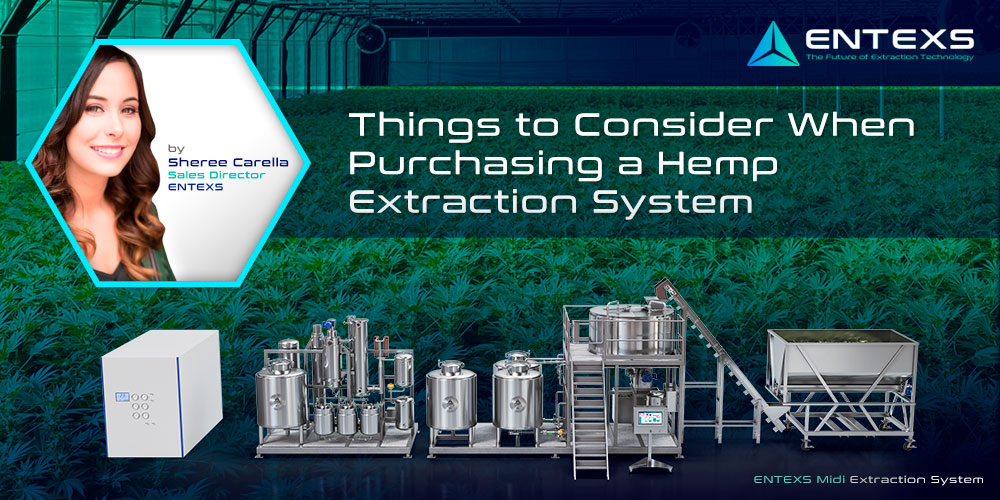
The combined hemp industries of state legal adult- and medical-use and federally legal hemp from seed to sale are estimated to reach the multi-tens of billions of dollars by 2023. [1] While smokable flower is still a common form to utilize hemp, final products formulated from extracted oils have a significant impact on the market.
hemp contains hundreds of cannabinoids, and “new” ones are being highlighted every few months (e.g., the delta-8-tetrahydrocannabinol (THC) craze), so it is important to have extraction equipment that is flexible to adjust to market changes. And like most areas of the hemp industry, it is important to recognize reputable manufacturers and quality systems versus companies interested in turning a quick profit.
The investment in hemp extraction systems is significant and there are several things to consider before signing the contract.
• Extraction type: carbon dioxide versus ethanol
• Output efficiency
• Total ownership costs
• Ability to scale
• Certifications
• Customer support
Carbon Dioxide or Ethanol Extraction
Carbon dioxide (CO2) and ethanol extraction are two of the three most popular solvent-based techniques (the 3rd being hydrocarbon extraction) for extracting large quantities of 900 pounds per-day or more. Each technique has pros and cons.
CO2 is an appealing solvent to many looking to extract hemp, as it’s easy to obtain, cheap, scalable, and considered environmentally friendly, in part, because it can be recycled. The startup costs for a CO2 system are higher than for its ethanol counterpart, but the long-term costs are lower.
CO2 extraction is typically known to be able to extract more cannabinoids, just at a longer run time, potentially alongside other undesirable components like chlorophyll or plant waxes. However, more recently introduced technologies offer ethanol wash via an automated extraction process that is optimized to extract as much CBD as possible.
After the first stage of extraction, the solvent recovery system does double duty to minimize solvent loss and capture additional CBD. Through this process, total CBD extraction is achieved from the biomass of 90%+. By controlling and maintaining ethanol-based solvent temperature during the entire extraction process to below -50°C, it is possible to bypass the extensive and time-consuming step of winterization, as many unwanted constituents, such as chlorophyll, fats and lipids, are not extracted.
Although in-line winterization of plant waxes is possible by tuning CO2 conditions appropriately, if the CO2 extraction conditions extract plant waxes, winterization/de-waxing may be required depending on what kinds of products are being manufactured. The unintended downside of winterization is that the process results in additional losses of cannabinoids and terpenes from the final product, especially if terpenes haven’t been removed prior at subcritical/liquid CO2 conditions.
Ethanol extraction has been used since before the prohibition of hemp in the early 20th century. The technique requires lower costs to get started and is easy to operate. The key to ethanol is its polarity, which is effective at capturing cannabinoids and terpenes while leaving plant fats and waxes behind when cooled to subzero temperatures.
By reducing the ethanol temperature during extraction, the solvent solubilizes the desired oils while precipitating plant waxes, so no further winterization is necessary post-extraction. While ethanol is more expensive than CO2, recapturing the ethanol in closed-loop systems – some technologies also eliminating the need for the additional step or rotovaping – makes it an environmentally friendly and more cost-efficient technique.
It should be noted, however, that water and other miscible ingredients dissolved in the ethanol will limit solvent recyclability.
Output Efficiency Many hemp extraction technology manufacturers claim to have the highest yields and it can be difficult for buyers to know who to trust. One parameter to consider is the extraction’s output efficiency, not by mass, but by cannabinoid retention. It is important to compare biomass input test results to the crude output to understand the technology’s output efficiency.
By knowing the biomass potency for cannabidiol (CBD) and cannabidiolic acid (CBDA), for example, you can in turn calculate the total CBD available by mass. Analytical testing of the extracted crude oil will highlight the amount of CBD extracted, enabling you to evaluate extraction efficiency. Ask for available 3rd party lab results that compare biomass potency to the cannabinoid profile in the extracted oil.
A reputable extraction technology manufacturer will have created efficient methods for extracting different outputs based on terpene content, moisture levels in the biomass, and cannabinoid potency.
While these methods will need to be refined once the extraction system reaches your facility and are used on your biomass, they provide an excellent starting point, and enable you to start running faster than if you’re required to create these methods from scratch.
The methods enable you to evaluate and compare extraction technologies from different manufacturers and also give you an idea of what to expect when the system is installed.
Total Ownership Costs
The initial price tag of hemp extraction systems is steep, but it is important to consider the total cost of ownership when looking at proposals from multiple manufacturers. Total ownership cost should take into consideration the system’s base price combined with any customizations required, shipping, installation, support, and consumable costs, included solvent and solvent disposal.
The two most important cost considerations are: 1) does the initial purchase include all the components you need to get started? and 2) what will it cost you per run to extract what you want? We will talk about scaling later, but from a total ownership cost perspective, it’s important to know if the system will meet your current and future needs.
Ease-of-use is calculated into operating costs in the form of labor expenses. Is the system so complicated to operate or adjust that it requires personnel to have advanced degrees, or will a more basic engineering or chemistry education suffice?
Warranties and service agreements are an important calculation of on-going costs as well. Manufacturers with robust warranties and service programs are more likely to have developed and tested their systems to higher standards. A more complete warranty and service program provides confidence that downtime and production losses will be minimized.
Ability to Scale
The ability of extraction equipment to scale in output and in capability is vital to the hemp processor. There are far fewer investors willing to buy-in to the multi-million-dollar vision than just a few years ago. It is more common to build a solid proof-of-concept facility, develop demand, and then expand the facility to meet demand and address market trends. You want an extraction manufacturer that understands the bigger and longer-term vision that you have for your operation.
To conserve early capital, you may choose an extraction system capable of extracting 900 pounds of biomass per day. That is a prudent start up approach; however, perhaps you ultimately want the ability to expand that 900 pounds as you grow your extraction business, or focus on specific cannabinoids such as delta-8-THC, cannabigerol, or cannabinol.
Be sure to ask the manufacturer about future scaling. Will expansion be an easy system upgrade or will it require a new investment in more expensive equipment?
In addition to total biomass processing capabilities, consider systems with add-on components and even better, look for modular systems. Modular systems are the most effective when scaling operations. They offer seamless scalability with easier integration of hardware and software.
These components may increase automation, improve operator experience, or increase yields. Modules and add-ons allow for a cost-effective, customized approach and future expansion. You want an extraction system that will grow with you rather than one that may be obsolete within 18-24 months.
Certifications
The hemp industry still has companies trying to capitalize on a new industry with little consideration for the quality of what they are selling. One indicator that you’re working with an extraction system manufacturer who cares about quality is their certifications. There are several global certifications that a company can earn to show their commitment to quality. The most common are current good manufacturing practices (cGMP), European GMP, and Underwriter Laboratories, or UL. These certifications require extensive design, development, and manufacturing considerations, and they take time, money, and effort to receive them.
In addition to seeing the badges, be sure to check with the governing body that the manufacture did complete the full process as fraud is common in this area. In addition to signaling an extraction manufacturer’s commitment to building a high-quality machine, certifications such as cGMP enable processors to seamlessly incorporate the extraction technology into their facility.
Customer Support and Service When you select an extraction technology, you are selecting a business partner. You want a company that you can trust just like you trust your back-office support of lawyers, accountants, and payroll. You are looking for a stable company and a group of people who understand your specific operational needs.
The best extraction system manufacturers offer additional services such as full lab development and consulting. And most importantly, you want to know you have a lifeline to help if you encounter system failures since every minute of downtime is dollars lost.
The biggest barrier to entry of becoming a hemp extractor is the cost of purchasing extraction technology, so choosing the right equipment is the foundation of success. The hemp industry still has those just interested in turning quick profits rather than being long-term partners and contributors.
The most important thing to consider when making a hemp extraction system investment is to find a manufacturing partner that can match your vision for future growth, high quality, high yields, and process support.
Reference
[1] Grandview Research. Industrial hemp market size, share & trends analysis report by product (seeds, fiber, shives), by application (animal care, textiles, food & beverages, personal care), and segment forecasts, 2020 – 2027. Published February 2020. Accessed February 3, 2021.
Contact us for more information
Contact our sales team for more information on custom cbd and hemp extraction systems, state-of-the-art thc remediation systems or preview our catalog of systems and modules available through our website.
Related Topics
- Analysis
- Cannabis Industry
- CBC Extraction
- CBD Extraction
- cbd isolate
- CBG Extraction
- cGMP
- Chromatography
- CO2
- Cold Water Extraction
- Ethanol Extraction
- Extraction 101
- Extraction Equipment
- Extraction Machine
- Extraction System
- GMP
- GMP Certification
- Hemp Extraction
- HPLC
- inline remediation
- Remediation
- Remediation Equipment
- Terpene Extraction
- terpenes
- THC
- THC Remediation
- All
- Extraction
- THC Remediation
- All
- Extraction
- THC Remediation
- Email: info @ entexs.com
- Toll Free: (888) 960-3689
- 3720 Trade Way, Cameron Park, CA 95682, USA
- ENTEXS is proud to be made in the USA
- © 2025 ENTEXS Corporation
- Privacy Policy
